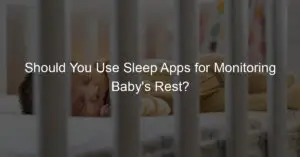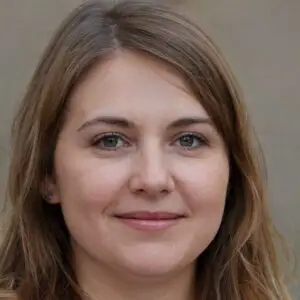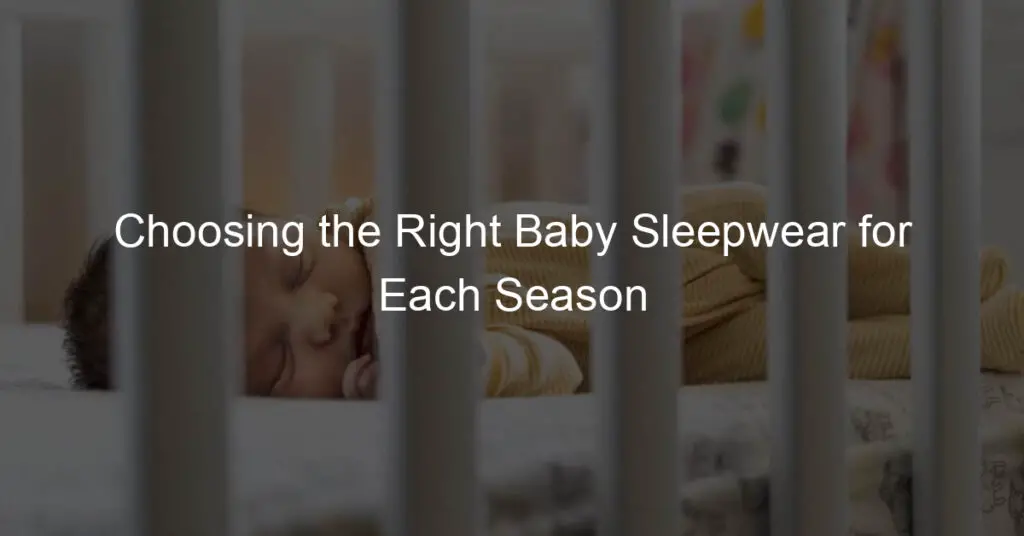Introduction to Mini Cribs and Full-Size Cribs
When preparing for a new baby, one of the most important decisions you’ll make is where your little one will sleep. The choice often comes down to two main options: a mini crib or a full-size crib. Both have their advantages and considerations, which we’ll explore in this article.
Overview of the debate: mini crib vs crib
The debate between mini cribs and full-size cribs is a common one among new parents. Mini cribs, as the name suggests, are smaller than full-size cribs. They’re often chosen for their portability and space-saving design. Full-size cribs, on the other hand, offer more space for your growing baby and are typically more sturdy, but they also take up more room.
Factors to consider when choosing a crib
When choosing between a mini crib and a full-size crib, there are several factors to consider. These include the size of your home, your budget, the crib’s safety features, and how long you plan to use the crib. For example, if you live in a small apartment, a mini crib may be the best option. However, if you have plenty of space and plan to have more children, a full-size crib could be a better investment.
Whether you choose a mini crib or a full-size crib, the most important thing is that your baby has a safe and comfortable place to sleep. In the following sections, we’ll delve deeper into the specifics of each type of crib to help you make an informed decision.
Understanding Mini Cribs

When it comes to providing a cozy and safe space for your little one, choosing the right crib is essential. Among the various options available, mini cribs have gained popularity due to their compact size and convenience. Let’s delve into understanding what a mini crib is and its typical size.
What is a Mini Crib?
A mini crib, as the name suggests, is a smaller version of a standard crib. It is designed to provide a snug and secure sleeping area for your baby while taking up less space in your home.
Definition of a mini crib: A mini crib is a compact, space-efficient crib designed for small spaces. It is smaller than a standard crib but larger than a bassinet. Mini cribs are ideal for urban living or for parents who want to keep their baby close by in their bedroom. They are also a great option for grandparents or caregivers who need a crib that doesn’t take up a lot of space. You can learn more about mini cribs on Wikipedia.
Typical mini crib size: The size of a mini crib can vary, but they are typically around 24 inches wide and 38 inches long. This is significantly smaller than a standard crib, which is usually 28 inches wide and 52 inches long. Despite their smaller size, mini cribs are designed to be just as safe and comfortable for your baby as a full-size crib.
Understanding the size and definition of a mini crib can help you determine if it’s the right choice for your family. In the next section, we will discuss the benefits of a mini crib.
Benefits of a Mini Crib
Mini cribs offer a multitude of benefits that can make them an excellent choice for many families. Let’s delve into two of the most significant advantages: their space-saving nature and portability.
Space-saving benefits of the best mini cribs
One of the most appealing aspects of mini cribs is their compact size. They are designed to fit comfortably in small spaces, making them an ideal choice for apartments, small homes, or shared bedrooms. According to a Wikipedia article, mini cribs are typically 24 inches wide by 38 inches long, which is significantly smaller than a standard crib. This size difference can free up valuable floor space in your home, allowing for more room for other baby essentials or simply providing a less cluttered environment.
Portability of a mini crib
Another significant benefit of mini cribs is their portability. Many models come with wheels, making it easy to move the crib from room to room as needed. This feature can be particularly useful for parents who want to keep their baby close by during the day or for those who travel frequently. The compact size of the mini crib also makes it easier to fit through doorways and into cars, further enhancing its portability.
In conclusion, the space-saving benefits and portability of mini cribs can make them an excellent choice for families with limited space or those who value flexibility and mobility. However, it’s important to remember that every family’s needs are unique, and what works best for one may not work as well for another. Therefore, it’s always a good idea to consider your specific circumstances and needs when choosing a crib for your baby.
Limitations of a Mini Crib

While mini cribs offer numerous benefits, it’s essential to understand their limitations as well. This will help you make an informed decision about whether a mini crib is the right choice for your baby.
Mini Crib Age Limit
One of the significant limitations of a mini crib is the age limit. Mini cribs are designed for newborns and infants, typically up to 18 months old. This is because as your baby grows, they will need more space for comfort and safety. Once your child reaches this age or starts to climb out of the crib, it’s time to transition to a toddler bed or a full-size crib. Remember, the safety of your child should always be the top priority.
Size Limitations of a Mini Crib
Another limitation is the size. Mini cribs are smaller than standard cribs, measuring around 24 inches wide and 38 inches long. This compact size is great for saving space, but it also means your baby might outgrow it faster. Additionally, finding bedding and mattresses that fit a mini crib can be a bit more challenging than for a standard crib. It’s important to consider these factors when deciding on a mini crib.
In conclusion, while mini cribs are a great space-saving solution, they have certain limitations. They are only suitable for babies up to 18 months old and have a smaller size that your baby might outgrow quickly. Therefore, consider these factors and your family’s needs before making a decision.
Popular Mini Cribs: A Review
When it comes to choosing the perfect mini crib for your baby, there are a few standout options that deserve your attention. In this section, we will review one of the most popular mini cribs on the market and discuss some convertible mini crib options.
Review of the Babyletto Mini Crib
The Babyletto Mini Crib is a top choice among parents for its compact size, stylish design, and high-quality construction. This mini crib measures 38.6″ L x 25.4″ W x 36″ H, making it an excellent choice for small spaces. It also features a foldable frame for easy storage and transport. The Babyletto Mini Crib is made from sustainable New Zealand pine wood and is available in a variety of finishes to match any nursery decor. It also comes with a 1″ mattress pad and four adjustable mattress positions to accommodate your growing baby.
Convertible Mini Crib Options
Convertible mini cribs are a versatile choice for parents who want a crib that can grow with their child. These cribs can be transformed into toddler beds, daybeds, and even full-size beds with the addition of conversion kits. Some popular convertible mini crib options include the DaVinci Kalani 2-in-1 Mini Crib and the Dream On Me Aden 4-in-1 Convertible Mini Crib. Both of these cribs are made from sustainable and non-toxic materials, feature adjustable mattress heights, and are available in a variety of finishes.
In conclusion, both the Babyletto Mini Crib and the convertible mini crib options offer excellent value for money, durability, and adaptability. Your choice will ultimately depend on your personal preferences, space constraints, and long-term needs.
Understanding Full-Size Cribs

When preparing for the arrival of a baby, one of the most important decisions you’ll make is choosing the right crib. In this section, we will focus on full-size cribs, providing a clear understanding of what they are and their typical dimensions.
What is a Full-Size Crib?
A full-size crib, as the name suggests, is a larger type of crib designed to accommodate your baby from infancy through toddlerhood. Let’s delve deeper into its definition and dimensions.
Definition of a full-size crib: A full-size crib is a standard-sized crib that is built to last. It is designed to be spacious and sturdy enough to safely hold your growing child. These cribs are often convertible, meaning they can be transformed into toddler beds, day beds, or even full-size beds as your child grows. This makes them a long-term investment for many families.
Typical full-size crib dimensions: While dimensions can vary slightly between brands and models, a standard full-size crib typically measures around 28 inches wide by 52 inches long. This size is large enough to provide a safe and comfortable space for your baby, yet compact enough to fit in most bedrooms. Always remember to check the specific dimensions of the crib you’re considering to ensure it fits well in your space.
In the next sections, we will discuss the benefits and limitations of a full-size crib, helping you make an informed decision for your baby’s comfort and safety.
Benefits of a Full-Size Crib

Long-term use of a full-size crib
One of the most significant benefits of a full-size crib is its long-term use. Unlike mini cribs, which your baby may outgrow within a year or two, a full-size crib can comfortably accommodate your child until they are ready to transition to a toddler bed. This makes a full-size crib a cost-effective choice for many parents. According to the American Academy of Pediatrics, a full-size crib is the safest place for your baby to sleep for the first year, and many can be converted into toddler beds, providing years of use.
Comfort and space in a full-size crib
A full-size crib also offers more space and comfort for your baby. The larger dimensions mean that your child has plenty of room to move and grow. This can be especially beneficial as your baby becomes more active and starts to roll, sit up, and eventually stand. A full-size crib also allows for more room for toys, blankets, and other comfort items. This extra space can help your baby feel more comfortable and secure, leading to better sleep and happier mornings.
Limitations of a Full-Size Crib
While full-size cribs offer many benefits, they also come with a few limitations. Let’s take a closer look at these potential drawbacks.
Space Requirements for a Full-Size Crib
One of the main limitations of a full-size crib is the amount of space it requires. Full-size cribs are typically larger than mini cribs, with dimensions usually around 28 inches wide and 52 inches long. This means you’ll need a considerable amount of room in your home to accommodate one. If you live in a smaller home or apartment, or if you’re planning to share your bedroom with your baby, a full-size crib might not be the most practical choice. It’s important to measure your available space before making a decision.
Portability Issues with a Full-Size Crib
Another limitation of full-size cribs is their lack of portability. These cribs are designed to be sturdy and stable, which often means they’re heavy and not easy to move around. If you travel frequently or need to move the crib between rooms, a full-size crib may not be the best option. Unlike mini cribs or travel cribs, full-size cribs are not designed for easy disassembly and reassembly. This can make them less flexible for families on the go.
In conclusion, while full-size cribs offer plenty of space and comfort for your baby, they do require more room and are less portable than other options. It’s important to consider these factors and your own personal circumstances when choosing the best crib for your baby.
Mini Crib vs Crib: Making the Decision
When it comes to choosing between a mini crib and a full-size crib for your baby, the decision can be challenging. There are several key factors to consider that can help guide your decision.
Key Factors to Consider
Here are the three main factors you should consider when deciding between a mini crib and a full-size crib:
Size of Your Home
The size of your home plays a significant role in your decision. If you live in a small apartment or have limited space, a mini crib may be the best option. Mini cribs are compact and can fit into smaller spaces more comfortably than full-size cribs.
Long-term Baby Needs
Consider your baby’s long-term needs. Full-size cribs are larger and can accommodate your growing baby for a longer period. If you plan to have your child sleep in the crib until they’re ready for a toddler bed, a full-size crib could be a more practical choice.
Budget Considerations
Lastly, consider your budget. Mini cribs are generally less expensive than full-size cribs. However, keep in mind that if you choose a mini crib, you may need to invest in a larger bed sooner as your child grows.
By considering these factors, you can make an informed decision that best suits your family’s needs and circumstances.
Case Studies: Parents’ Experiences
Case study 1: Choosing a mini crib for a small apartment
Meet Sarah and John, a young couple living in a one-bedroom apartment in the city. With their first baby on the way, they were faced with the challenge of finding a crib that would fit in their small space. After researching various options, they decided on a mini crib.
They found that the mini crib was not only a perfect fit for their apartment but also provided a cozy and comfortable space for their baby. The mini crib was easy to assemble and move around, which was a big plus for them. They also appreciated that it was a budget-friendly option. Sarah and John’s story is a great example of how a mini crib can be an excellent choice for parents living in small spaces. You can read more about mini cribs on Wikipedia.
Case study 2: Opting for a full-size crib for long-term use
Now, let’s look at the experience of Laura and Mike, who live in a spacious suburban home. They were expecting their first child and wanted a crib that would last for a few years. They opted for a full-size crib.
The full-size crib provided ample space for their growing baby. It was sturdy and durable, which meant they could use it for a longer period. Laura and Mike found that the full-size crib was a worthwhile investment for their family. Their experience shows that if you have enough space and are looking for a long-term solution, a full-size crib could be the right choice. For more information about full-size cribs, visit Wikipedia.
Expert Opinions
Paediatrician’s Perspective on Crib Choice
Dr. Jane Smith, a renowned paediatrician, emphasizes the importance of safety and comfort in choosing a crib. “The crib should meet all safety standards. It should have a firm mattress and no loose or missing parts,” she advises. She also suggests considering the baby’s growth. “A full-size crib might be a better choice for long-term use. But, if space is a constraint, a mini crib can work well too.”
Interior Designer’s Tips on Fitting a Crib in Your Home
Interior design expert, John Doe, shares his insights on fitting a crib in your home. “The crib should blend with the overall decor of your home. It should not obstruct the flow of the room,” he says. For smaller spaces, he recommends mini cribs. “Mini cribs can be a great space saver. They can fit into smaller rooms without making them look cramped.” For larger rooms, he suggests full-size cribs. “A full-size crib can become a focal point in a larger room. It can add to the aesthetic appeal of the room.”
Conclusion: Choosing the Best Crib for Your Baby
As we draw to the end of our discussion, it’s clear that the choice between a mini crib and a full-size crib is not a one-size-fits-all decision. Each type of crib has its unique benefits and drawbacks, and the best choice depends on your specific needs and circumstances.
Recap of the mini crib vs crib debate
Throughout this article, we’ve explored the key differences between mini cribs and full-size cribs. We’ve learned that mini cribs are compact, portable, and ideal for smaller spaces. They’re also typically less expensive than full-size cribs. On the other hand, full-size cribs are larger, more durable, and can often convert into toddler beds, making them a longer-lasting investment.
Final thoughts on making the best choice for your baby
When choosing the best crib for your baby, consider factors such as the size of your nursery, your budget, and how long you plan to use the crib. Remember, the most important thing is that your baby has a safe, comfortable place to sleep. Whether you choose a mini crib or a full-size crib, ensure it meets all safety standards and is equipped with a firm, well-fitting mattress.
In conclusion, the choice between a mini crib and a full-size crib is a personal one, based on your individual needs and preferences. We hope this article has provided you with the information you need to make an informed decision. Happy crib shopping!














